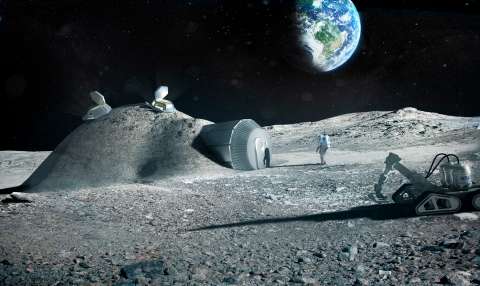commercial space exploration today

The space industry is undergoing an extraordinary evolution. As national budgets tighten, governments are increasingly seeking to involve the private sector in all aspects of space transportation and exploration, which private companies are keen to do as the commercial imperative transforms the economics of space.
Both established players and start-ups are using lower cost technologies – including nano- and microsats – to build innovative systems and services in Earth observation or satellite communications. Private companies are already successfully delivering cargo to the International Space Station (ISS). Others are keen to develop the launch and hosting capabilities to take humans to the ISS, the Moon or even Mars. There is a recreational side, too. Space travel companies promise an exhilarating ride to the edge of our atmosphere and are actively offering seats on their future spacecraft.
THE ECONOMICS OF SPACE
Greater competition and ongoing scientific discovery will lower the cost of space exploration still further.
Today, the biggest impediment to space exploration is the cost of escaping Earth’s atmosphere. Lifting heavy equipment and cargo requires a great deal of thrust – and fuel.
Building new spacecraft or servicing existing ones in the weightlessness of space could be more economic if the necessary resources are already close at hand. And those resources could serve as well as the basic materials for additive manufacturing in space of a variety of critical equipment and parts.
Once in space, the emphasis switches to the resources necessary for sustaining human habitat. At present, astronauts must ferry all their fuel, food and water with them, adding to already hefty payloads.
Water is the critical component for drinking, nourishing plants, and as an element in the ongoing production of energy and air. Without it, there is virtually no prospect for deep-space travel and habitats. Ice from asteroids or the Moon could be harnessed for both biological and energy needs in outer space.
The legal challenges of space
Having the right materials in the right place at the right price is just one component of the space exploration equation.
Some of today’s international space law was drawn up long ago, well before the prospect of harnessing space resources had become a realistic option. The idea of using space resources was already around when the 1967 Outer Space Treaty was concluded at a time when the United States and the former Soviet Union were competing to reach the Moon. The treaty bans countries from appropriating celestial, outer space bodies, including the Moon. However, there is a lack of clarity about the ownership of metals, minerals and other resources that may be found there.
This legal uncertainty now needs clarification. Investors, companies and their customers rightfully expect certainty if they are to commit significant resources – human, material and financial - to long-term projects.
Luxembourg is the first European country and the second country worldwide after the United States to offer a legal framework that secures property rights for space resources. As more countries develop their own legal framework, Luxembourg is ready to join international efforts to harmonise global rules for the peaceful exploration and utilisation of space resources. Luxembourg is actively engaged in related discussion at the UN COPUOS and strongly contributes to the work of the International Hague Space Resources Governance Working Group.
To learn more about the legal framework, click here.




